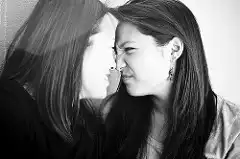
“We teach our children not to run into the street when they’re toddlers, but we don’t do the same when they become adolescents,” said Laurie Halse Anderson, a young adult author who I heard speaking at Book Riot Live, a conference “celebrating books and the reading life.” One moment our kids are playing innocent games and the next, they are hit with adult-size issues and often, they haven’t been given the tools needed to navigate what has become an overstimulated, technologically focused world, where anything and everything is coming at them at breakneck speed. We are complicit the moment we put a device into a child’s hand without giving them guidelines and frames of reference.
Letting Anderson’s words brew while I slept, I woke at 5:30 a.m. in a panic, thinking of all of the information I haven’t yet imparted to my own pre-teen. Unable to shake the urgency, I jumped out of bed, grabbed a notebook and started making notes, lest I forget something. And, of course, I will have forgotten something. Later in the day, I read a front page news story about a Colorado school where about 100 kids, ranging from eighth graders to seniors, were caught in a sexting scandal using vault apps. Then, there was the Motherlode story from the New York Times featuring the viewpoint that the Snapchat app might be ok for kids. There was much more required reading in the comments to that article. What it all comes down to is education. It’s imperative that parents become educated about what kids are doing on their devices and be sure to provide a framework for their families to address what is acceptable, and what may constitute criminal behavior. I can’t help but think that a fair amount of kids involved in the Colorado scandal, or the next one that showed up on my Facebook feed, aren’t even aware that certain things they do with their devices are illegal.
What can we do? Get literate. Read about what’s happening across the nation. Impart knowledge to our kids before they find themselves in trouble.The approach of high school isn’t easy for either parents or kids. While pre-adolescents and adolescents do know more than we think they do, they don’t have the full picture. It’s up to parents and caregivers to provide the knowledge and framework they need to thrive even when met with rolling eyes.
At the conference, Anderson referred to herself and a handful of other writers like David Levithan and John Green, as resilience writers. Their books often cover heavy hitting topics like date rape, eating disorders, homosexuality, romantic relationships, and more. Rather than shielding our kids from the scary parts of life, it’s important to let them know they’re not alone. We can do this by having conversations, listening, and, maybe putting books in their hands. Please also join us Thursday, Nov. 19 at 7 p.m. when Frances Jensen, co-author of “The Teenage Brain: A Neuroscientist’s Survival Guide to Raising Adolescents and Young Adults” appears at the library for the second annual Gould Lecture Series about child development, endowed by Audrey and Kenneth Gould. Every bit of information has the potential to help grow more resilient souls.
Photo courtesy of flickr Creative Commons license, user J.K. Califf.
